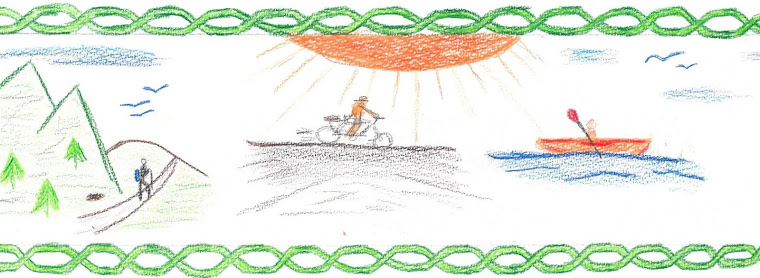Reflecting on some of my
earliest backpacking adventures, I sometimes wonder how I managed to survive.
For example, over the Christmas / New Year’s holiday during my senior year of
high school, two friends and I embarked on our first multi-night winter backpacking
trip. We were not only inexperienced but lacking in both knowledge and wool.
Our primary attire was cotton: cotton blue jeans, cotton long johns, and
probably cotton tops. If I was lucky, my socks were wool, but I really don’t
remember. My toboggan was synthetic. I also wore a nylon (but not very
waterproof) pull-over parka. I knew nothing about hypothermia, and my
backpacking partners probably didn’t either.
Our first late December day
began with frost on the grass, crisp air, and a bright shining sun in a clear
blue sky that warmed us as we hiked. Since none of us had bothered to check the
weather forecast, we had no idea what was in store. Sometimes ignorance is
bliss.
| Current signage where Forbes Road intersects the LHHT |
That day we hiked some back
roads on the western slope of Pennsylvania’s Laurel Ridge until we could access
the historic 1758 Forbes Road. Over two hundred years later, it was little more
than a Jeep trail. We backpacked along this famous but unmarked route until it
intersected the Laurel Highlands Hiking Trail on the eastern side of Laurel
Ridge near the ridge line. Making it to one of the new Adirondack style trail
shelters on this new trail, we camped for the night, safe and secure in our lack
of knowledge and inexperience, still unaware of and unprepared for what we
would face the following day.
The next morning we packed up
and started hiking under overcast skies. Eventually a fine mist started falling,
and with the falling moisture, the temperature started dropping as well. After
we were damp from the mist, the precipitation eventually changed to a wet snow
that started accumulating. As darkness approached, we found ourselves getting
cold. Little did we know we were starting to experience the initial stages of hypothermia.
 |
| My backpacking partners on our second day |
Growing increasingly confused,
weak, and uncoordinated, we hiked on through the cold and snow, looking for the
next shelter. We eventually become benighted, but about eight miles after
setting out from the previous night’s shelter, we managed to locate the next
one. Once inside, we built a roaring fire in the fireplace, warmed up, hung our
wet cotton up to dry in the heat of the fire, and refueled with a warm meal and
warm liquids. One of our sleeping bags had also become wet and we used the dry warmth
from the fire to dry it as well.
Evaluating our predicament, we planned
to hike the next day the few miles to the closest road, find a phone, and call
to be picked up. Our third morning we found the trail covered with several
inches of snow. The temperature was below freezing, but at least the snow had
stopped falling and the there was little wind. We managed to hike out, arrange
to be picked up, and lived to backpack another day.
 |
| That's me on our last day before we bugged out |
An earlier and slightly different version of this post originally appeared on The Trek.

No comments:
Post a Comment